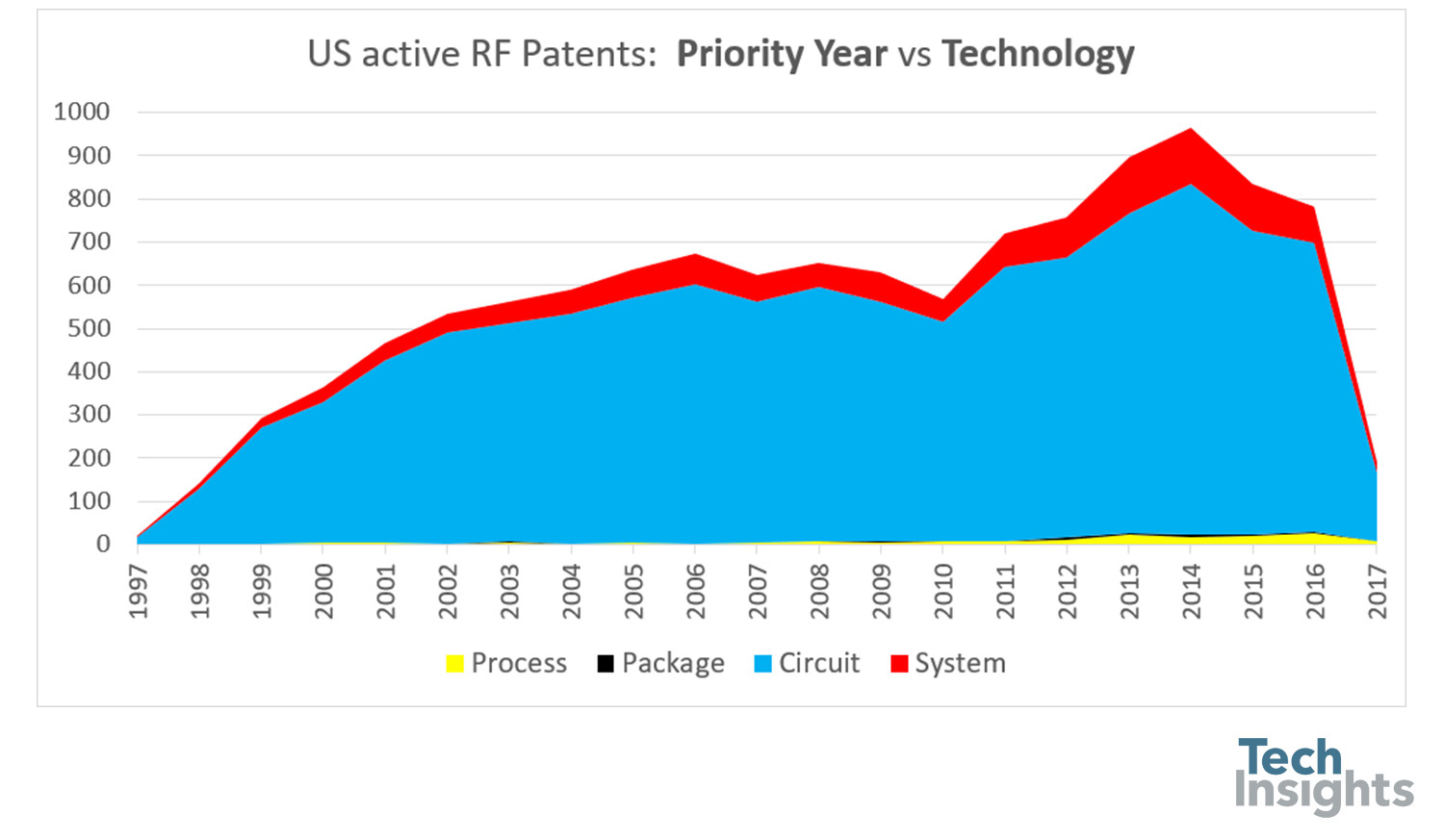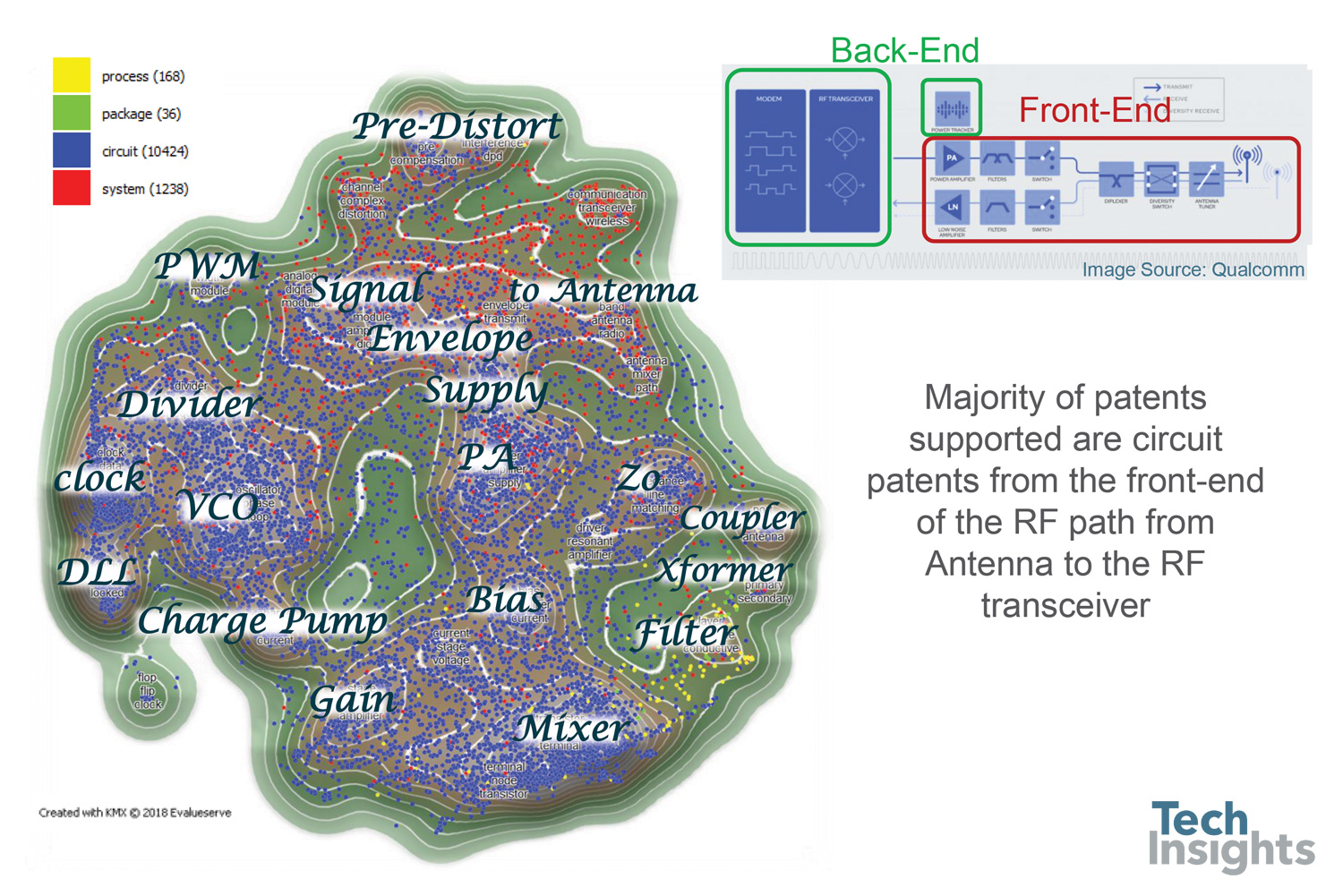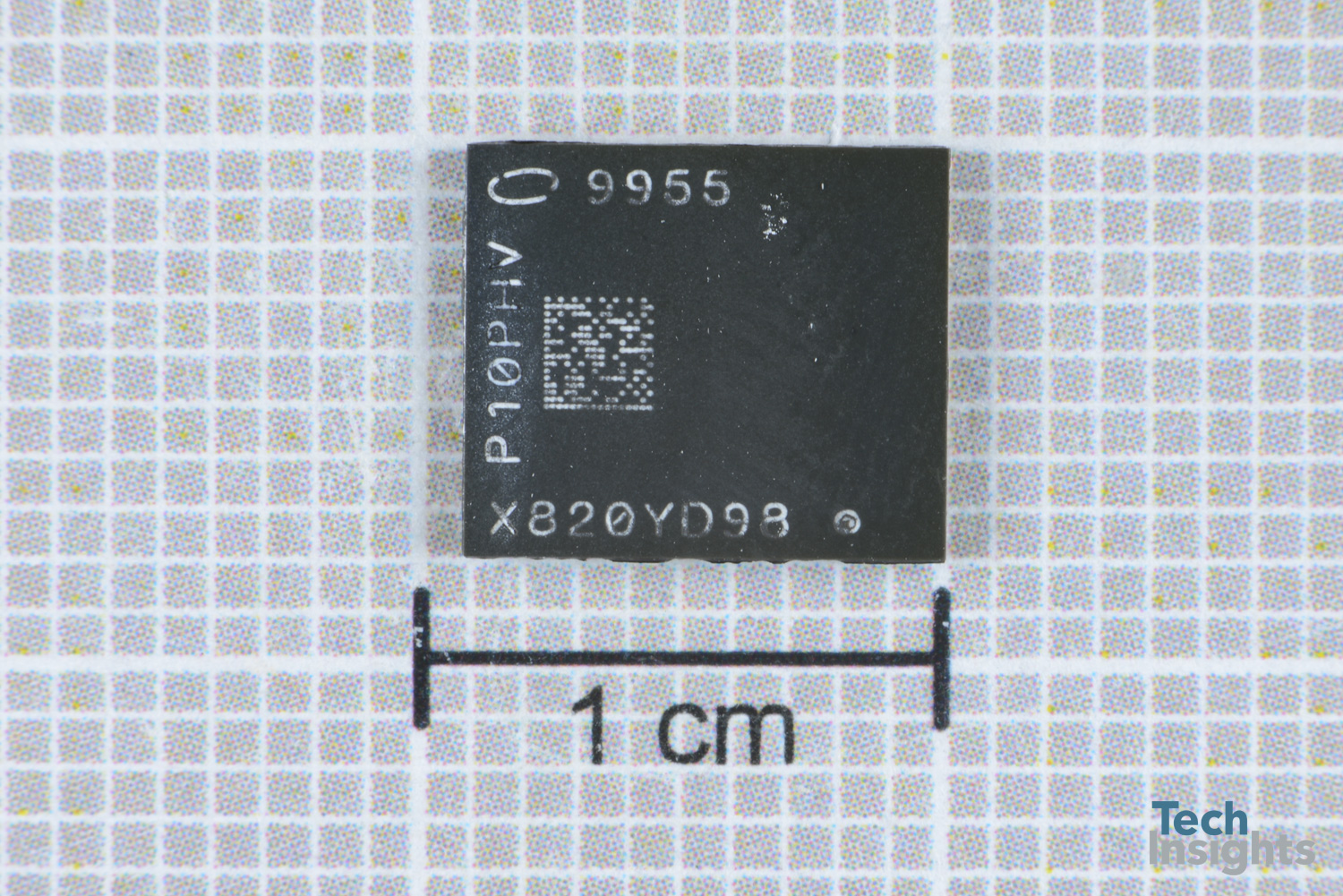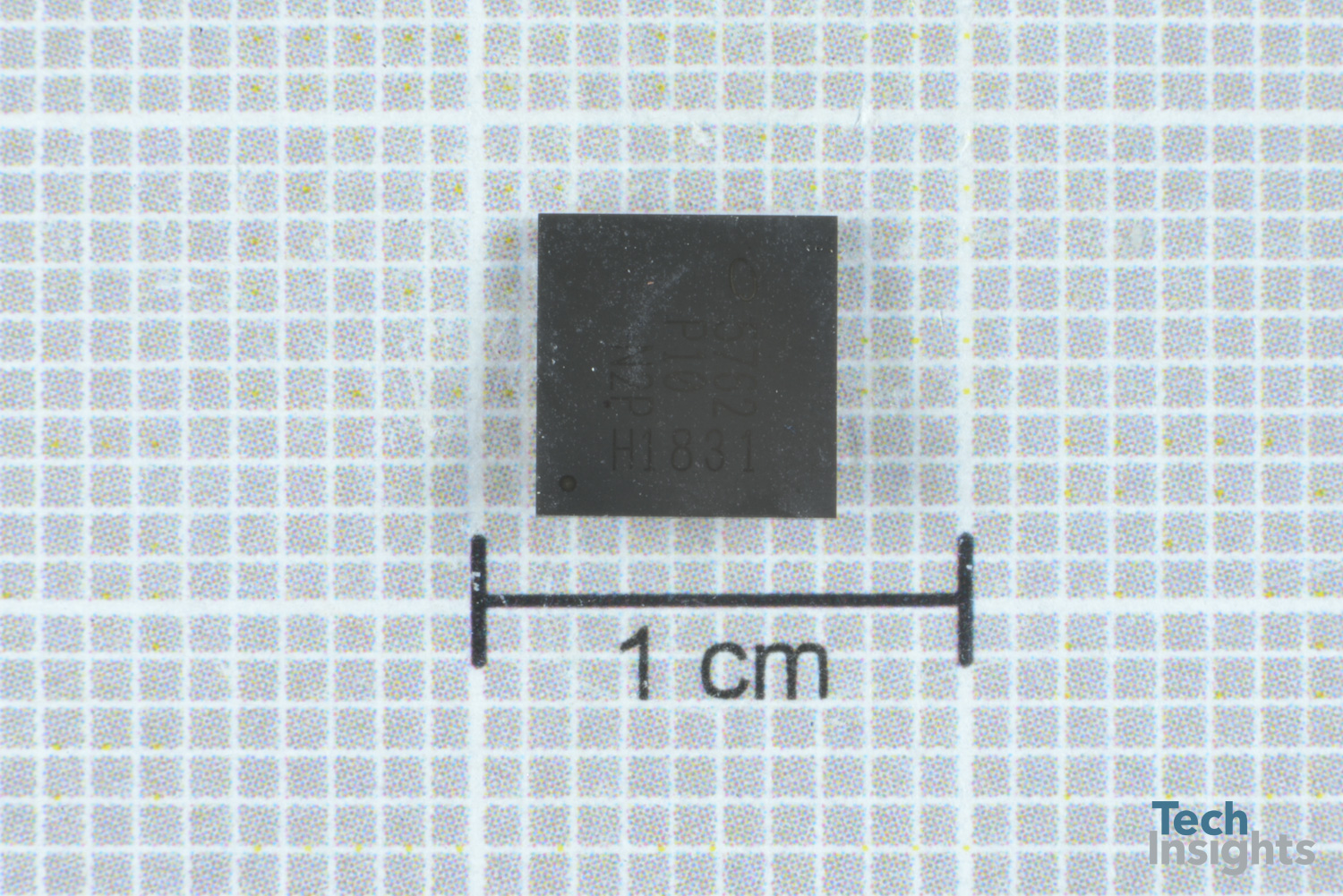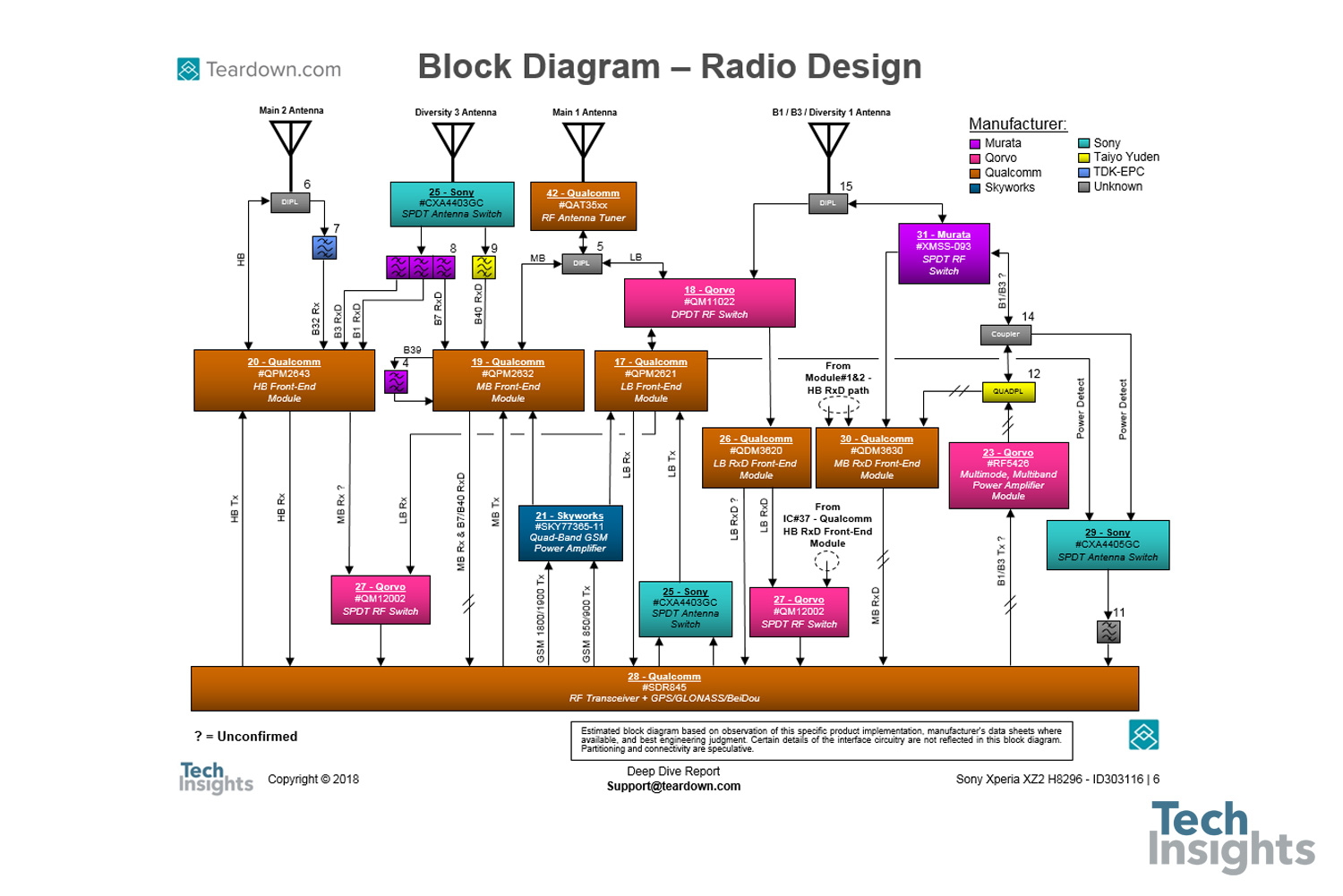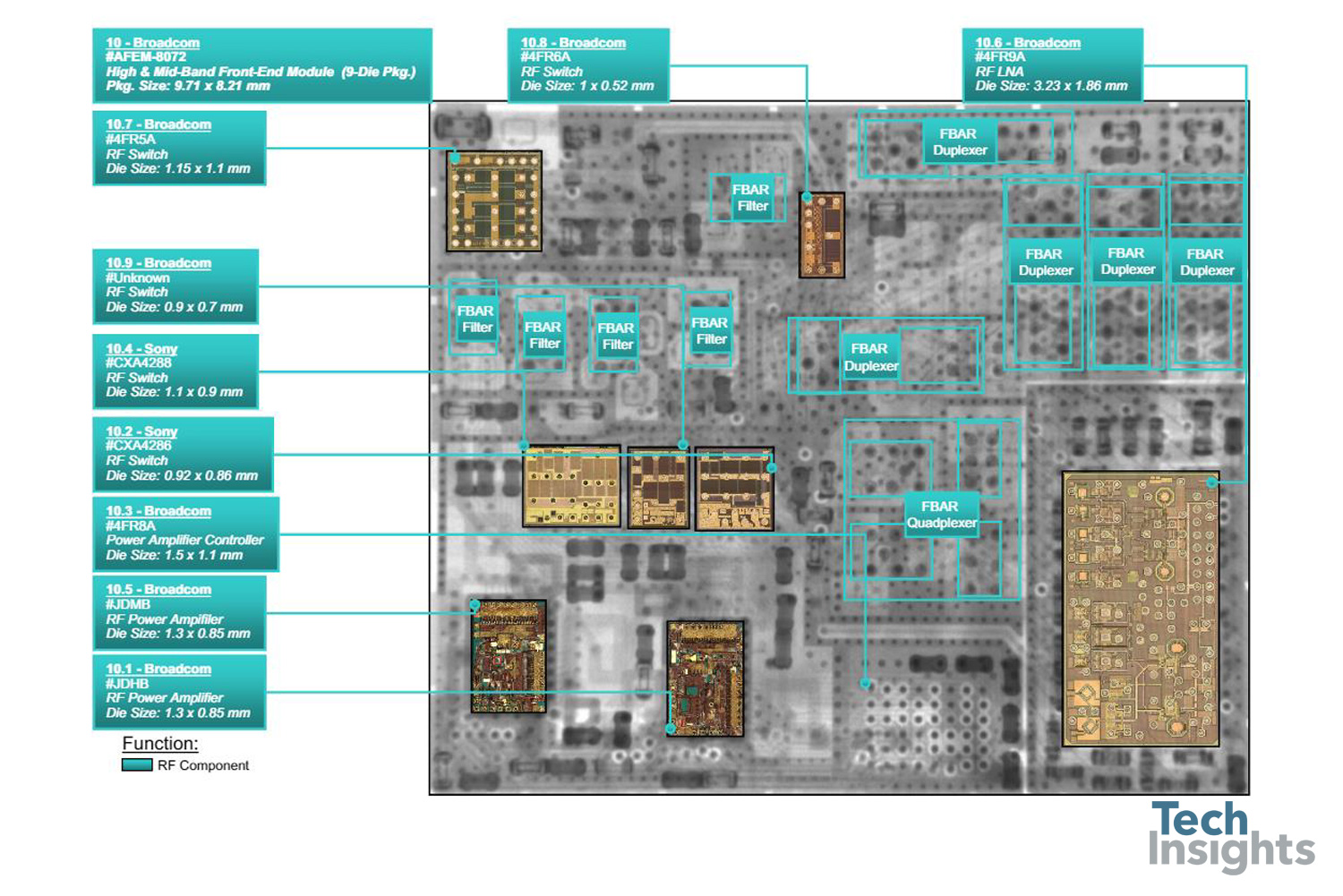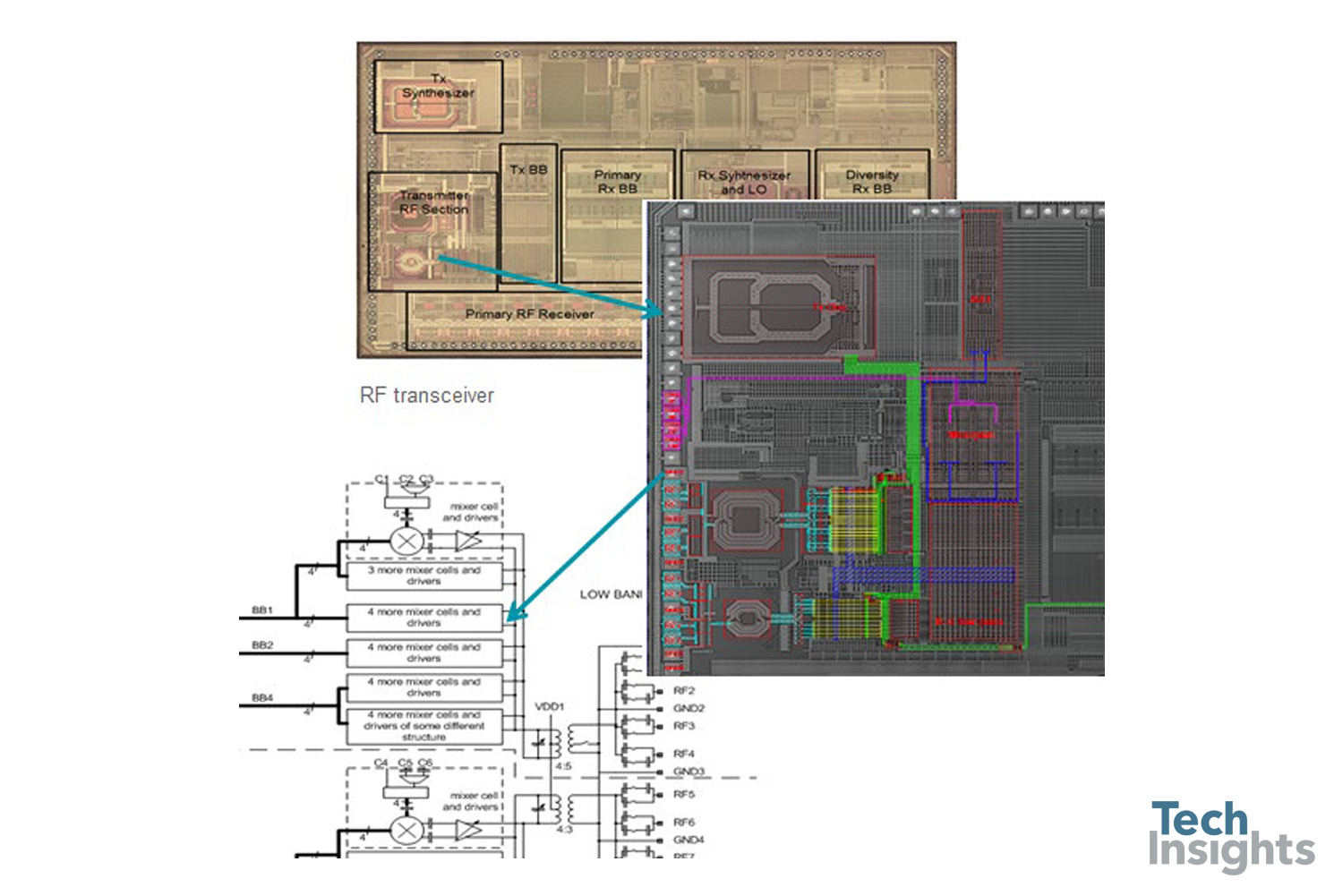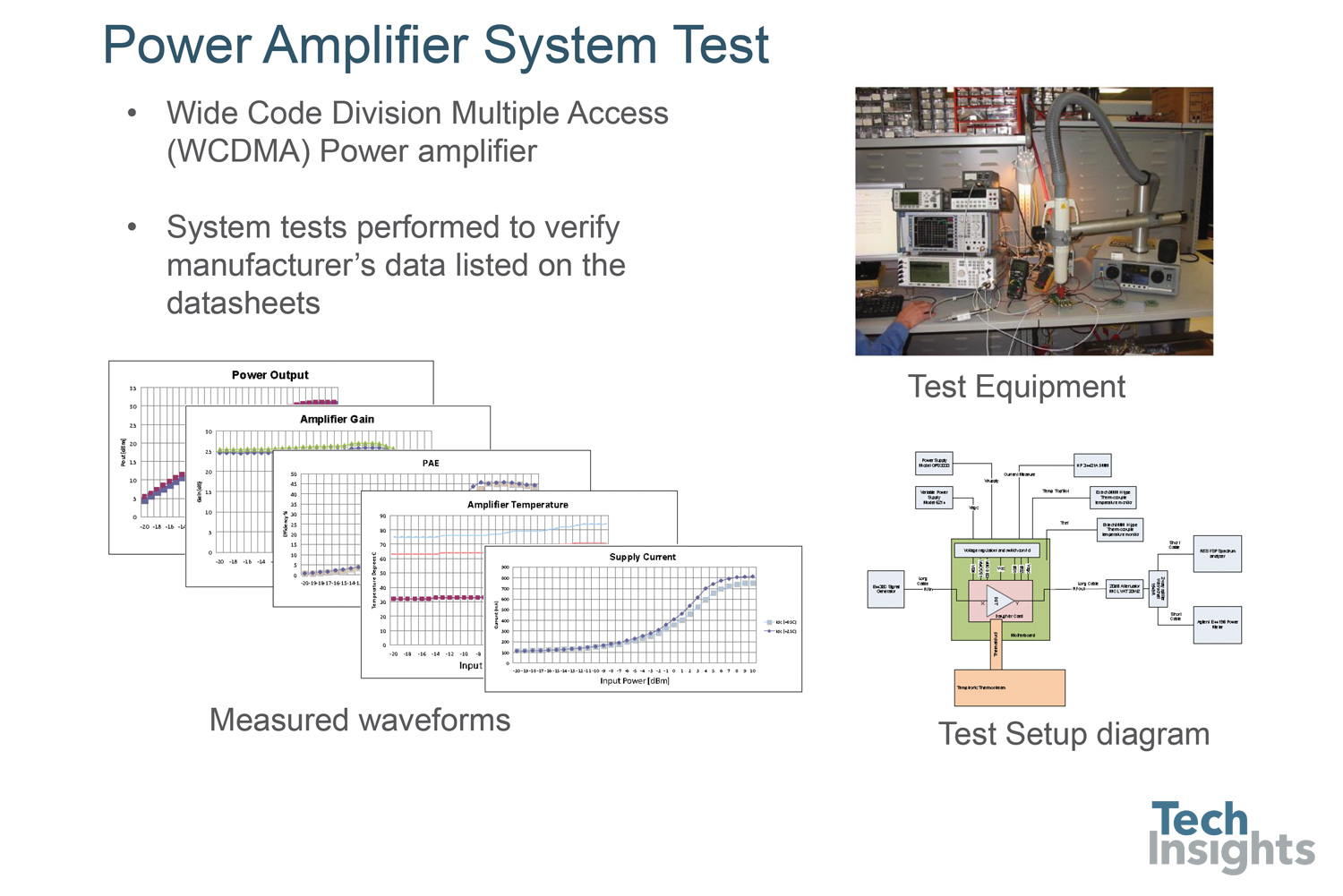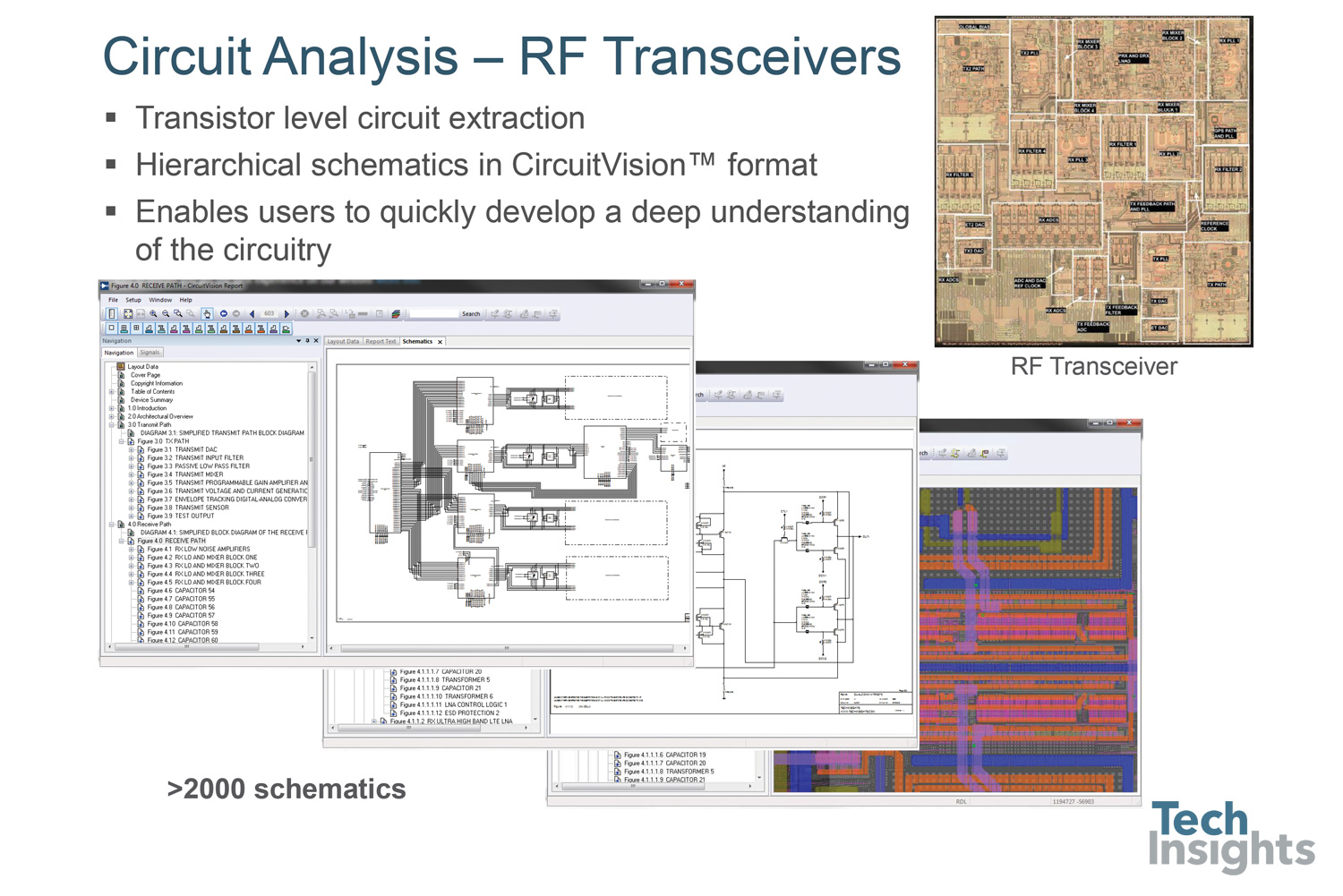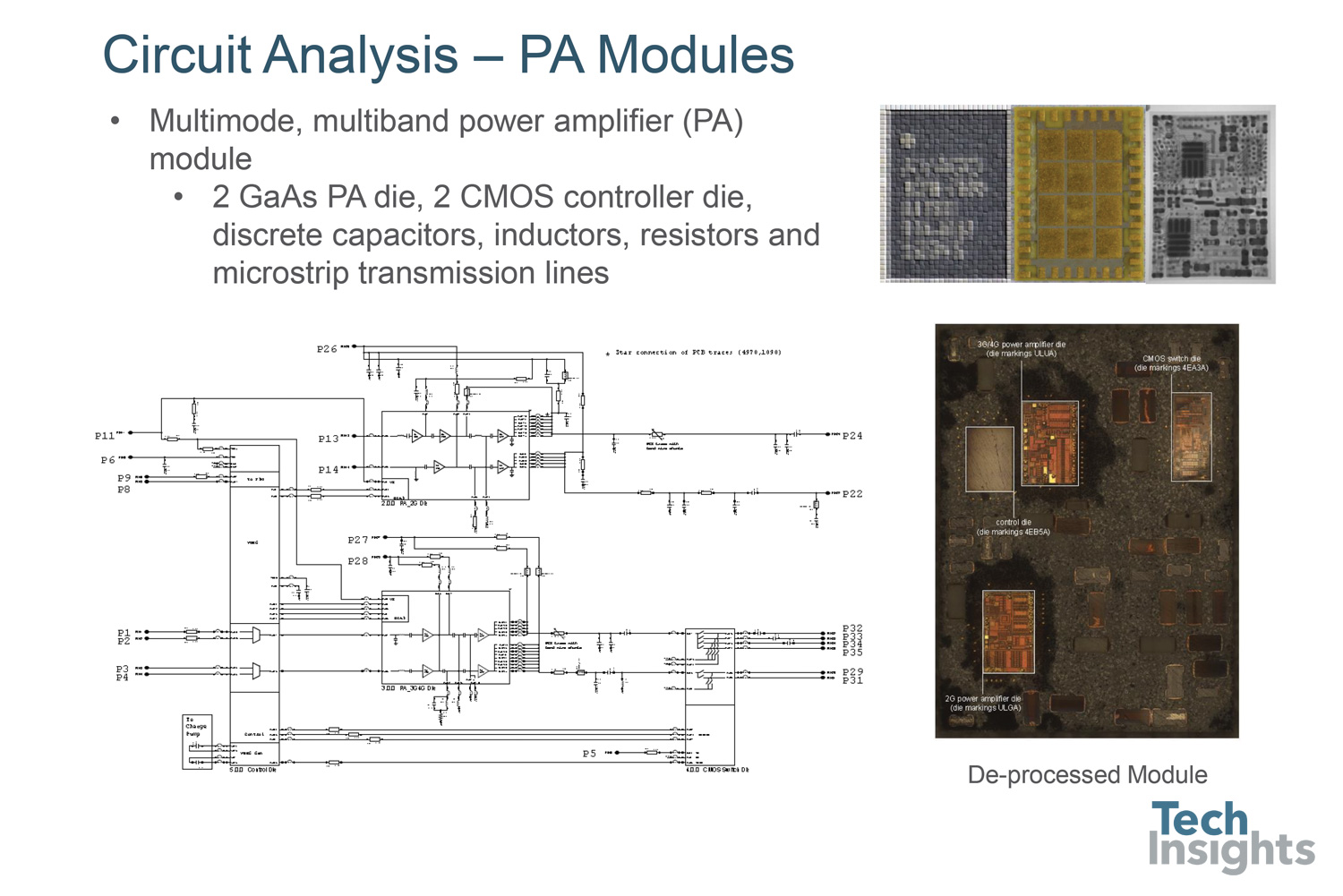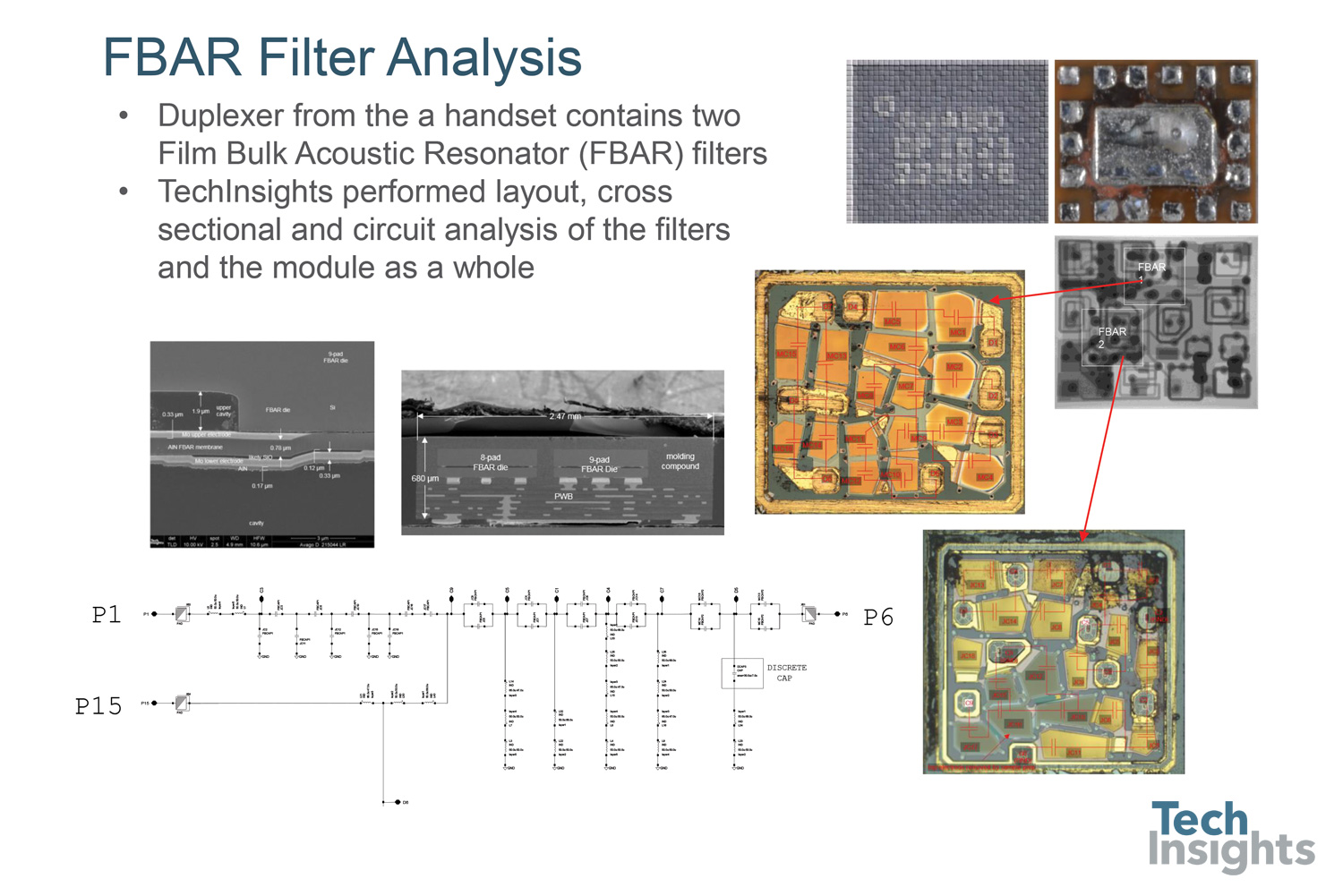Posted: April 09, 2019
The mobile RF front-end architectures of 3G and early 4G smartphones were relatively simple and could be built from discrete components. The mobile radio frequency (RF) front-end today has become much more complex to support the evolving LTE standard. Smartphones need to support multiple bands using advanced filtering and multiplexing techniques to keep power consumption and interference low. They also need to support an increased number of bands. Carrier aggregation has been added to enable handsets to accommodate higher bandwidths by using multiple bands simultaneously. Multi-region or global phones require more bands and therefore more filters. 5G phones will likely require more than 100 RF filters.
TechInsights analyzes mobile RF devices from the antenna to the RF transceiver as well as the baseband processor. The types of analysis performed on these devices include: teardown, functional testing, package and structure, circuit and transistor characterization. Through this analysis, we see different approaches to addressing complexity issues; while some vendors are providing pin-compatible components that enable a common architecture to support different bands/regions simply by replacing components, other vendors are focused on more integrated architectures. When we look at this through the lens of evidence of use and supporting patents, it is interesting to note that most patents being supported in the RF space are circuit related, and more specifically, in the RF front-end.
Front-end module analysis is going to become more important with the continued integration of the front-end into modules that contain several die and multiple passives. This article takes a closer look at some of the recent innovations in mobile RF architecture and integration, and at the types of analysis available to examine them.
Teardown design win identification
TechInsights’ teardown of the Apple iPhone Xs Max revealed the new Intel Baseband Processor PMB9955. Decapsulation of this part uncovered the die marks shown below. We are confident that this component is Intel’s XMM 7560 LTE Advanced Pro 4G LTE Platform. According to Intel, XMM 7560 is the firm’s fifth-generation LTE modem, fabbed via Intel’s own 14 nm process. It is also Intel’s first modem that supports the CDMA standard, which enables Apple to obtain full U.S. carrier coverage without having to support models with different modems.
Teardown block diagram
In 2016, Qualcomm formed a joint venture with TDK to deliver “a fully integrated system” as they felt “Module solutions will be essential to support this increasing complexity in the RF front-end.” Because of this joint venture, Qualcomm announced a new family of RF front-end components and design-wins and claim to have the industry’s first “Modem-to Antenna solution” as demonstrated in the new Sony Xperia XZ2 smart phone. You can see this archtecture demonstrated in a block diagram of the radio desgin taken from our deep dive teardown of the Sony Xperia XZ2 Smarphone.
Structural and circuit analysis working hand-in-hand
As we move towards 5G from 4G, RF component integration is exemplified in the Broadcom/Avago AFEM-8072 High and Mid-Band front-end Module, found in the iPhone 8, 8 plus, and X, and includes 10 dies and multiple passive components. These module analyses are interesting in that they require circuit reverse engineering of the chips within the module that are made using a variety of processes (i.e. CMOS, GaaN), and they require reverse engineering of the module substrate itself to reconstruct how the chips are connected to each other. We are seeing front-end modules and power amplifiers containing multiple die, integrating multiple functionalities (such as power amplifiers, antenna switches, filters, duplexers, multiplexors and LNAs). An example of this integration is the AFEM-8072 high and mid-band front-end module, shown in Figure 8.
TechInsights’ architectural analysis of RF transceivers provides an understanding of the receive and transmit paths of a transceiver without doing in-depth transistor level circuit reverse engineering. RF signal traces are on the upper levels of the device making them easier to identify and trace with minimal processing of the device. High level block diagrams can be created to quickly understand the RX or TX architectures.
Like module reverse engineering, the reverse engineering of the phone PCB is going to become more important as the integration of the system will need to be understood. Consider a patent that requires understanding how the envelope tracker (ET) interacts with the power amplifiers (PA) based on feedback from the RF transceiver: this will require circuit reverse engineering of the ET, PA and RF transceiver chips as well as the PCB that shows how they interact with each other.
Power amplifier system testing allows us to measure various operational parameters, as demonstrated in Figure 10. System tests were performed on the Avago ACPM-7371 wide code division multiple access (WCDMA) power amplifier.
Where full circuit extraction is necessary, TechInsights delivers hierarchical schematics that enable users to quickly develop a deep understanding of the content. An example is shown in Figure 11 with the Qualcomm WTR5795 RF Transceiver.
Below is an example of circuit analysis we performed on the Avago ACPM-7600 multimode, multiband power amplifier module. This analysis examines the various chips within the module at the transistor level, as well as re-creating the system level schematic of the module. With the continued integration of the front-end components into System in Packages, this analysis will be increasingly important.
Our final example, shown in Figure 13, is of FBAR filter analysis performed on the Avago DFI621 duplexer from the Apple iPhone 7.
In closing
Manufacturers are addressing modern-day complexities with innovative solutions. As new solutions are introduced, so too are new or updated methods applied to reverse engineer them. Technology professionals need to stay up-to-date on the variety of available solutions for design and competitive purposes; IP professionals need to be aware of the analytical options available, and how these can be applied in patent and portfolio actions.
If you are interested in learning more about TechInsights RF analysis, please download our product brief or watch this recently recorded webinar titled: The Mobile Radio Frequency Landscape - A Patent and Technology Perspective.
About TechInsights
TechInsights has been publishing technology analysis for over 30 years, enabling our customers to advance their intellectual property and product strategies. With a library of over 14,000 reports, and hundreds of new reports published each year, TechInsights maintains the world’s largest database of semiconductor and technology data. In support of our Technology Library and Teardown Subscriptions, we purchase and catalog hundreds of products each year, documenting each products’ packaging, features, modules, components and subassemblies, as well as providing costing estimates for the bill of materials. It is through this exhaustive process that we can discover and share useful market information.





